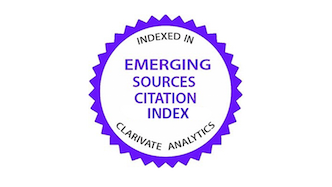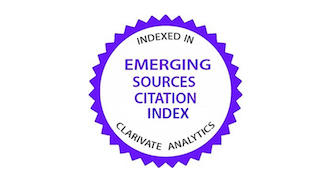Potential for obtaining carbonaceous materials from bamboo: Costa Rica case
DOI:
https://doi.org/10.15517/r68t4z48Keywords:
biochar, activated carbon, graphite, torrefaction, pyrolysisAbstract
Introduction. Bamboo as an agroforestry resource in Costa Rica includes introduced and native species, used in furniture manufacturing, which generates waste with potential to obtain carbonaceous materials. Objective. To analyze technologies and conditions for producing carbonaceous materials from bamboo and their application in a circular economy and bioeconomy model within the context of bamboo cultivation in Costa Rica. Development. The main processes are pyrolysis (slow, medium, and fast) and torrefaction, differentiated by the temperature applied: torrefaction occurs between 200 °C and 300 °C, while pyrolysis takes place between 350 °C and 700 °C. These conditions may vary according to the atmosphere used (CO2, N2, steam, air or minimum oxygen). Among the materials that can be obtained, activated carbon and biochar stand out, with recent research focused on applications in electronics and water treatment, as well as improving their use as fuel. However, many studies do not specify the bamboo species used or standardize the production processes and methodologies, as these depend on the physicochemical composition and region of cultivation. In the country, there is a lack of recent studies on productivity and cultivation areas to estimate the amount of carbonaceous materials that could be generated. Conclusions. There is an opportunity for research on bamboo cultivation in Costa Rica, covering agronomic aspects and the production of carbonaceous materials with high value-added applications, promoting a circular economy and bioeconomy model.
Downloads
References
Abdulyekeen, K. A., Umar, A. A., Patah, M. F. A., & Daud, W. M. A. W. (2021). Torrefaction of biomass: Production of enhanced solid biofuel from municipal solid waste and other types of biomass. Renewable and Sustainable Energy Reviews, 150, Article 111436. https://doi.org/10.1016/j.rser.2021.111436 DOI: https://doi.org/10.1016/j.rser.2021.111436
Ahmad, M. S., Liu, C. G., Nawaz, M., Tawab, A., Shen, X., Shen, B., & Mehmood, M. A. (2021). Elucidating the pyrolysis reaction mechanism of Calotropis procera and analysis of pyrolysis products to evaluate its potential for bioenergy and chemicals. Bioresource Technology, 322, Article 124545. https://doi.org/10.1016/j.biortech.2020.124545 DOI: https://doi.org/10.1016/j.biortech.2020.124545
Ahmad, A., Priyadarshini, M., Yadav, S., Ghangrekar, M. M., & Surampalli, R. Y. (2022). The potential of biochar-based catalysts in advanced treatment technologies for efficacious removal of persistent organic pollutants from wastewater: A review. Chemical Engineering Research and Design, 187, 470–496. https://doi.org/10.1016/j.cherd.2022.09.024 DOI: https://doi.org/10.1016/j.cherd.2022.09.024
Alam, M., & Peela, N. R. (2022). Catalytic co-pyrolysis of wet-torrefied bamboo sawdust and plastic over the zeolite HY: Synergism and kinetics. Journal of the Energy Institute, 100, 76–88. https://doi.org/10.1016/j.joei.2021.11.004 DOI: https://doi.org/10.1016/j.joei.2021.11.004
Alam, M., Rammohan, D., Bhavanam, A., & Peela, N. R. (2021). Wet torrefaction of bamboo saw dust and its co-pyrolysis with plastic. Fuel, 285, Article 119188. https://doi.org/10.1016/j.fuel.2020.119188 DOI: https://doi.org/10.1016/j.fuel.2020.119188
Alegría, A. (2013). Manejo Sostenible del recurso Guadua angustifolia en Costa Rica y su potencial para la mitigación del cambio climático. Estudio de caso: Plantación de Guadua angustifolia variedad Atlántica en la Estación Experimental los Diamantes, Guápiles [Tesis de maestría no publicada]. Instituto Tecnológico de Costa Rica.
Arteaga-Perez, L. E., Flores, M., Escobar, M., Segura, C., & Gordon, A. (2015). Análisis comparativo de la torrefacción húmeda y seca de Pinus radiata. Energética, 46, 5–12. http://www.redalyc.org/articulo.oa?id=147043932002
Awasthi, M. K., Duan, Y., Liu, T., Awasthi, S. K., & Zhang, Z. (2020). Relevance of biochar to influence the bacterial succession during pig manure composting. Bioresource Technology, 304, Article 122962. https://doi.org/10.1016/j.biortech.2020.122962 DOI: https://doi.org/10.1016/j.biortech.2020.122962
Biswas, S., Rahaman, T., Gupta, P., Mitra, R., Dutta, S., Kharlyngdoh, E., Guha, S., Ganguly, J., Pal, A., & Das, M. (2022). Cellulose and lignin profiling in seven, economically important bamboo species of India by anatomical, biochemical, FTIR spectroscopy and thermogravimetric analysis. Biomass and Bioenergy, 158, Article 106362. https://doi.org/10.1016/j.biombioe.2022.106362 DOI: https://doi.org/10.1016/j.biombioe.2022.106362
Briceño Elizondo, E., Villalobos Barquero, V., Vargas Fonseca, L., Guevara Bonilla, M., & Esquivel Segura, E. (2017 octube 27-29). Potencial de crecimiento y almacenamiento de carbono en plantaciones de bambú Guadua (Guadua angustifolia) en la Zona Sur de Costa Rica [Ponencia general]. Primer Congreso de Bambú, Ciudad de México, México. https://1ercongresobambu.wordpress.com/wp-content/uploads/2017/02/elemer-bricec3b1o-potencial-de-crecimiento-y-almacenamiento-de-carbono-en-plantaciones-de-bambc3ba-guadua-en-la-zona-sur-de-costa-rica.pdf
Calvo, I., & Avilés, R. (2003). Diagnóstico del cultivo del bambú: análisis de sus modalidades de explotación. Instituto Nacional de Innovación y Transferencia en Tecnología Agropecuaria. https://www.mag.go.cr/bibliotecavirtual/E21-7713.pdf
Chen, D., Gao, A., Cen, K., Zhang, J., Cao, X., & Ma, Z. (2018). Investigation of biomass torrefaction based on three major components: hemicellulose, cellulose, and lignin. Energy Conversion and Management, 169, 228–237. https://doi.org/10.1016/j.enconman.2018.05.063 DOI: https://doi.org/10.1016/j.enconman.2018.05.063
Chen, W.-H., Lin, B.-J., Colin, B., Chang, J.-S., Pétrissans, A., Bi, X., & Pétrissans, M. (2018). Hygroscopic transformation of woody biomass torrefaction for carbon storage. Applied Energy, 231, 768–776. https://doi.org/10.1016/j.apenergy.2018.09.135 DOI: https://doi.org/10.1016/j.apenergy.2018.09.135
Chen, W.-H., Lin, B.-J., Lin, Y.-Y., Chu, Y.-S., Ubando, A. T., Show, P. L., Ong, H. C., Chang, J.-S., Ho, S.-H., Culaba, A. B., Pétrissans, A., & Pétrissans, M. (2021). Progress in biomass torrefaction: principles, applications and challenges. Progress in Energy and Combustion Science, 82, Article 100887. https://doi.org/10.1016/j.pecs.2020.100887 DOI: https://doi.org/10.1016/j.pecs.2020.100887
Chen, W.-H., Liu, S.-H., Juang, T.-T., Tsai, C.-M., & Zhuang, Y.-Q. (2015). Characterization of solid and liquid products from bamboo torrefaction. Applied Energy, 160, 829–835. https://doi.org/10.1016/j.apenergy.2015.03.022 DOI: https://doi.org/10.1016/j.apenergy.2015.03.022
Chen, D., Yu, X., Song, C., Pang, X., Huang, J., & Li, Y. (2016). Effect of pyrolysis temperature on the chemical oxidation stability of bamboo biochar. Bioresource Technology, 218, 1303–1306. https://doi.org/10.1016/j.biortech.2016.07.112 DOI: https://doi.org/10.1016/j.biortech.2016.07.112
Deras, J. E. (2003). Análisis de la cadena productiva del bambú en Costa Rica [Tesis de maestría, Centro Agronómico Tropical de Investigación y Enseñanza]. Repositorio CATIE. https://repositorio.catie.ac.cr/handle/11554/4145
Dharmaraja, J., Shobana, S., Arvindnarayan, S., Francis, R. R., Jeyakumar, R. B., Saratale, R. G., Ashokkumar, V., Bhatia, S. K., Kumar, V., & Kumar, G. (2023). Lignocellulosic biomass conversion via greener pretreatment methods towards biorefinery applications. Bioresource Technology, 369, Article 128328. https://doi.org/10.1016/j.biortech.2022.128328 DOI: https://doi.org/10.1016/j.biortech.2022.128328
Ding, Z., Kumar Awasthi, S., Kumar, M., Kumar, V., Mikhailovich Dregulo, A., Yadav, V., Sindhu, R., Binod, P., Sarsaiya, S., Pandey, A., Taherzadeh, M. J., Rathour, R., Singh, L., Zhang, Z., Lian, Z., & Kumar Awasthi, M. (2023). A thermo-chemical and biotechnological approaches for bamboo waste recycling and conversion to value added product: towards a zero-waste biorefinery and circular bioeconomy. Fuel, 333, Article 126469. https://doi.org/10.1016/j.fuel.2022.126469 DOI: https://doi.org/10.1016/j.fuel.2022.126469
Dong, Q., Ren, S., Zhang, S., Huang, S., Guo, Y., Li, H., Nie, L., Sun, Z., & Du, Y. (2021). Role of calcium ion in moso bamboo pyrolysis under microwave irradiation. Fuel Processing Technology, 211, Article 106598. https://doi.org/10.1016/j.fuproc.2020.106598 DOI: https://doi.org/10.1016/j.fuproc.2020.106598
Dubey, P., Shrivastav, V., Maheshwari, P. H., & Sundriyal, S. (2020). Recent advances in biomass derived activated carbon electrodes for hybrid electrochemical capacitor applications: challenges and opportunities. Carbon, 170, 1–29. https://doi.org/10.1016/j.carbon.2020.07.056 DOI: https://doi.org/10.1016/j.carbon.2020.07.056
Eze, W. U., Umunakwe, R., Obasi, H. C., Ugbaja, M. I., Uche, C. C., & Madufor, I. C. (2021). Plastics waste management: a review of pyrolysis technology. Clean Technologies and Recycling, 1(1), 50–69. https://doi.org/10.3934/ctr.2021003 DOI: https://doi.org/10.3934/ctr.2021003
Fromm, O., Heckmann, A., Rodehorst, U. C., Frerichs, J., Becker, D., Winter, M., & Placke, T. (2018). Carbons from biomass precursors as anode materials for lithium-ion batteries: new insights into carbonization and graphitization behavior and into their correlation to electrochemical performance. Carbon, 128, 147–163. https://doi.org/10.1016/j.carbon.2017.11.065 DOI: https://doi.org/10.1016/j.carbon.2017.11.065
Fryda, L., Daza, C., Pels, J., Janssen, A., & Zwart, R. (2014). Lab-scale co-firing of virgin and torrefied bamboo species Guadua angustifolia Kunth as a fuel substitute in coal fired power plants. Biomass and Bioenergy, 65, 28–41. https://doi.org/10.1016/j.biombioe.2014.03.044 DOI: https://doi.org/10.1016/j.biombioe.2014.03.044
Gao, L., Zhou, Y., Meng, F., Li, Y., Liu, A., Li, Y., Zhang, C., Fan, M., Wei, G., & Ma, T. (2020). Several economical and eco-friendly bio-carbon electrodes for highly efficient perovskite solar cells. Carbon, 162, 267–272. https://doi.org/10.1016/j.carbon.2020.02.049 DOI: https://doi.org/10.1016/j.carbon.2020.02.049
Gautam, N., & Chaurasia, A. (2020). Study on kinetics and bio-oil production from rice husk, rice straw, bamboo, sugarcane bagasse and neem bark in a fixed-bed pyrolysis process. Energy, 190, Article 116434. https://doi.org/10.1016/j.energy.2019.116434 DOI: https://doi.org/10.1016/j.energy.2019.116434
Guerra, S. P. S., Oguri, G., De Jesus Eufrade, H., Xavier de Melo, R., & Spinelli, R. (2016). Mechanized harvesting of bamboo plantations for energy production: preliminary tests with a cut-and-shred harvester. Energy for Sustainable Development, 34, 62-66. https://doi.org/10.1016/j.esd.2016.07.005 DOI: https://doi.org/10.1016/j.esd.2016.07.005
Hadiya, V., Popat, K., Vyas, S., Varjani, S., Vithanage, M., Kumar Gupta, V., Núñez Delgado, A., Zhou, Y., Loke Show, P., Bilal, M., Zhang, Z., Sillanpää, M., Sabyasachi Mohanty, S., & Patel, Z. (2022). Biochar production with amelioration of microwave-assisted pyrolysis: current scenario, drawbacks and perspectives. Bioresource Technology, 355, Article 127303. https://doi.org/10.1016/j.biortech.2022.127303 DOI: https://doi.org/10.1016/j.biortech.2022.127303
Hernández Ávila, O. (2022). Modelo de asociatividad empresarial para el uso sostenible de las plantaciones de bambú (Guadua angustifolia Kunth) existentes en los terrenos del embalse Arenal del Instituto Costarricense de Electricidad [Tesis de licenciatura, Universidad Nacional de Costa Rica]. Repositorio UNA. http://hdl.handle.net/11056/25660
Hu, W., Feng, Z., Yang, J., Gao, Q., Ni, L., Hou, Y., He, Y., & Liu, Z. (2021). Combustion behaviors of molded bamboo charcoal: influence of pyrolysis temperatures. Energy, 226, Article 120253. https://doi.org/10.1016/j.energy.2021.120253 DOI: https://doi.org/10.1016/j.energy.2021.120253
Hu, J., Song, Y., Liu, J., Evrendilek, F., Buyukada, M., Yan, Y., & Li, L. (2020). Combustions of torrefaction-pretreated bamboo forest residues: physicochemical properties, evolved gases, and kinetic mechanisms. Bioresource Technology, 304, Article 122960. https://doi.org/10.1016/j.biortech.2020.122960 DOI: https://doi.org/10.1016/j.biortech.2020.122960
Hu, J., Song, Y., Liu, J., Evrendilek, F., Zhang, G., Ren, M., Xie, W., & Sun, S. (2022). Torrefaction-assisted oxy-fuel co-combustion of textile dyeing sludge and bamboo residues toward enhancing emission-to-ash desulfurization in full waste circularity. Fuel, 318, Article 123603. https://doi.org/10.1016/j.fuel.2022.123603 DOI: https://doi.org/10.1016/j.fuel.2022.123603
Hu, R., Xiao, J., Wang, T., Gong, Y., Chen, G., Chen, L., & Tian, X. (2020). Highly concentrated amino-modified biochars using a plasma: evolution of surface composition and porosity for heavy metal capture. Carbon, 168, 515–527. https://doi.org/10.1016/j.carbon.2020.07.012 DOI: https://doi.org/10.1016/j.carbon.2020.07.012
Huang, M., Ma, Z., Zhou, B., Yang, Y., & Chen, D. (2020). Enhancement of the production of bio-aromatics from renewable lignin by combined approach of torrefaction deoxygenation pretreatment and shape selective catalytic fast pyrolysis using metal modified zeolites. Bioresource Technology, 301, Article 122754. https://doi.org/10.1016/j.biortech.2020.122754 DOI: https://doi.org/10.1016/j.biortech.2020.122754
Huang, Y., Tao, B., Lal, R., Lorenz, K., Jacinthe, P. A., Shrestha, R. K., Bai, X., Singh, M. P., Lindsey, L. E., & Ren, W. (2023). A global synthesis of biochar’s sustainability in climate-smart agriculture - Evidence from field and laboratory experiments. Renewable and Sustainable Energy Reviews, 172, Article 113042. https://doi.org/10.1016/j.rser.2022.113042 DOI: https://doi.org/10.1016/j.rser.2022.113042
Kaikiti, K., Stylianou, M., & Agapiou, A. (2021). Development of food-origin biochars for the adsorption of selected volatile organic compounds (VOCs) for environmental matrices. Bioresource Technology, 342, Article 125881. https://doi.org/10.1016/j.biortech.2021.125881 DOI: https://doi.org/10.1016/j.biortech.2021.125881
Kakati, U., Sakhiya, A. K., Baghel, P., Trada, A., Mahapatra, S., Upadhyay, D., & Kaushal, P. (2022). Sustainable utilization of bamboo through air-steam gasification in downdraft gasifier: experimental and simulation approach. Energy, 252, Article 124055. https://doi.org/10.1016/j.energy.2022.124055 DOI: https://doi.org/10.1016/j.energy.2022.124055
Khan, N., Chowdhary, P., Gnansounou, E., & Chaturvedi, P. (2021). Biochar and environmental sustainability: emerging trends and techno-economic perspectives. Bioresource Technology, 332, Article 125102. https://doi.org/10.1016/j.biortech.2021.125102 DOI: https://doi.org/10.1016/j.biortech.2021.125102
Khiari, B., Jeguirim, M., Limousy, L., & Bennici, S. (2019). Biomass derived chars for energy applications. Renewable and Sustainable Energy Reviews, 108, 253–273. https://doi.org/10.1016/j.rser.2019.03.057 DOI: https://doi.org/10.1016/j.rser.2019.03.057
Khuong, D. A., Nguyen, H. N., & Tsubota, T. (2021). Activated carbon produced from bamboo and solid residue by CO2 activation utilized as CO2 adsorbents. Biomass and Bioenergy, 148, Article 106039. https://doi.org/10.1016/j.biombioe.2021.106039 DOI: https://doi.org/10.1016/j.biombioe.2021.106039
Li, J., Dai, J., Liu, G., Zhang, H., Gao, Z., Fu, J., He, Y., & Huang, Y. (2016). Biochar from microwave pyrolysis of biomass: a review. Biomass and Bioenergy, 94, 228–244. https://doi.org/10.1016/j.biombioe.2016.09.010 DOI: https://doi.org/10.1016/j.biombioe.2016.09.010
Li, J., Dou, B., Zhang, H., Zhang, H., Chen, H., Xu, Y., & Wu, C. (2021). Pyrolysis characteristics and non-isothermal kinetics of waste wood biomass. Energy, 226, Article 120358. https://doi.org/10.1016/j.energy.2021.120358 DOI: https://doi.org/10.1016/j.energy.2021.120358
Li, M.-F., Li, X., Bian, J., Chen, C.-Z., Yu, Y.-T., & Sun, R.-C. (2015). Effect of temperature and holding time on bamboo torrefaction. Biomass and Bioenergy, 83, 366–372. https://doi.org/10.1016/j.biombioe.2015.10.016 DOI: https://doi.org/10.1016/j.biombioe.2015.10.016
Li, T., Remón, J., Jiang, Z., Budarin, V. L., & Clark, J. H. (2018). Towards the development of a novel “bamboo-refinery” concept: selective bamboo fractionation by means of a microwave-assisted, acid-catalysed, organosolv process. Energy Conversion and Management, 155, 147–160. https://doi.org/10.1016/j.enconman.2017.10.077 DOI: https://doi.org/10.1016/j.enconman.2017.10.077
Ma, Z., Zhang, Y., Shen, Y., Wang, J., Yang, Y., Zhang, W., & Wang, S. (2019). Oxygen migration characteristics during bamboo torrefaction process based on the properties of torrefied solid, gaseous, and liquid products. Biomass and Bioenergy, 128, Article 105300. https://doi.org/10.1016/j.biombioe.2019.105300 DOI: https://doi.org/10.1016/j.biombioe.2019.105300
Manouchehrinejad, M., & Mani, S. (2018). Torrefaction after pelletization (TAP): analysis of torrefied pellet quality and co-products. Biomass and Bioenergy, 118, 93–104. https://doi.org/10.1016/j.biombioe.2018.08.015 DOI: https://doi.org/10.1016/j.biombioe.2018.08.015
Montiel, M., & Murillo, L. (1998). Historia ecológica y aprovechamiento del bambú. Revista de Biología Tropical, 46(S3), 11–18.
Nfornkah, B. N., Kaam, R., Zapfack, L., Tchamba, M., & Chimi, D. C. (2020). Bamboo diversity and carbon stocks of dominant species in different agro-ecological zones in Cameroon. African Journal of Environmental Science and Technology, 14(10), 290–300. https://doi.org/10.5897/AJEST2020.2871 DOI: https://doi.org/10.5897/AJEST2020.2871
Nistratov, A. V., Klushin, V. N., Makashova, E. S., & Kim, L. V. (2020). Production and evaluation of properties of waste-based carbon adsorbent. Chemical Engineering Research and Design, 160, 551–560. https://doi.org/10.1016/j.cherd.2020.06.016 DOI: https://doi.org/10.1016/j.cherd.2020.06.016
Organización Internacional del Bambú y el Ratán. (2022). Global priority species of economically important bamboo (INBAR Technical Report No. 44). https://www.inbar.int/wp-content/uploads/2023/02/Global-Priority-Species-of-Economically-Important-Bamboo-Final-version.pdf
Organización Internacional del Bambú y el Ratán. (2023). Resumen anual 2022. https://www.inbar.int/wp-content/uploads/2023/07/AH2022-ES.pdf
Oyedun, A. O., Gebreegziabher, T., & Hui, C. W. (2013). Mechanism and modelling of bamboo pyrolysis. Fuel Processing Technology, 106, 595–604. https://doi.org/10.1016/j.fuproc.2012.09.031 DOI: https://doi.org/10.1016/j.fuproc.2012.09.031
Patel, B., Patel, A., Syed, B. A., Gami, B., & Patel, P. (2021). Assessing economic feasibility of bio-energy feedstock cultivation on marginal lands. Biomass and Bioenergy, 154, Article 106273. https://doi.org/10.1016/j.biombioe.2021.106273 DOI: https://doi.org/10.1016/j.biombioe.2021.106273
Pungbun, N. A. P. (2000) Bamboo resources and utilization in Thailand. In L. Puangchit, B. Thaiutsa, & S. Thamincha (Eds.), Bamboo 2000. Proceedings of the International Symposium of Royal Project Foundation (pp. 6–12). Asksorn Siam Printing.
Qu, X., Fu, H., Mao, J., Ran, Y., Zhang, D., & Zhu, D. (2016). Chemical and structural properties of dissolved black carbon released from biochars. Carbon, 96, 759–767. https://doi.org/10.1016/j.carbon.2015.09.106 DOI: https://doi.org/10.1016/j.carbon.2015.09.106
Raheem, A., Wan Azlina, W. A. K. G., Taufiq Yap, Y. H., Danquah, M. K., & Harun, R. (2015). Thermochemical conversion of microalgal biomass for biofuel production. Renewable and Sustainable Energy Reviews, 49, 990–999. https://doi.org/10.1016/j.rser.2015.04.186 DOI: https://doi.org/10.1016/j.rser.2015.04.186
Rao, N. S., & Nagarajaiah, C. (1991). Evaluation of Bambusa arundinacea (Retz.) Willd. for growth and biomass production in dry land ecosystem. Myforest, 27, 70-74.
Rao, G., Shao, J., Chen, X., Fu, L., Zhang, X., Zhang, J., Wang, Q., Krivoshapkin, P., Krivoshapkina, E., & Chen, H. (2023). A new strategy of preparing high-value products by co-pyrolysis of bamboo and ZIF-8. Fuel Processing Technology, 243, Article 107669. https://doi.org/10.1016/j.fuproc.2023.107669 DOI: https://doi.org/10.1016/j.fuproc.2023.107669
Rengga, W. D. P., Chafidz, A., Sudibandriyo, M., Nasikin, M., & Abasaeed, A. E. (2017). Silver nano-particles deposited on bamboo-based activated carbon for removal of formaldehyde. Journal of Environmental Chemical Engineering, 5(2), 1657–1665. https://doi.org/10.1016/J.JECE.2017.02.033 DOI: https://doi.org/10.1016/j.jece.2017.02.033
Riaño, N. M., Londoño, X., López, Y., & Gómez, J. H. (2002). Plant growth and biomass distribution on Guadua angustifolia Kunth in relation to ageing in the Valle del Cauca – Colombia. Bamboo Science and Culture: The Journal of the American Bamboo Society, 16(1), 43–51.
Sangsuk, S., Buathong, C., & Suebsiri, S. (2020). High-energy conversion efficiency of drum kiln with heat distribution pipe for charcoal and biochar production. Energy for Sustainable Development, 59, 1–7. https://doi.org/10.1016/j.esd.2020.08.008 DOI: https://doi.org/10.1016/j.esd.2020.08.008
Sattasathuchana, S., Parnthong, J., Youngian, S., Faungnawakij, K., Rangsunvigit, P., Kitiyanan, B., Khunphonoi, R., Wanichsombat, A., Grisdanurak, N., & Khemthong, P. (2023). Energy efficiency of bio-coal derived from hydrothermal carbonized biomass: Assessment as sustainable solid fuel for municipal biopower plant. Applied Thermal Engineering, 221, Article 119789. https://doi.org/10.1016/j.applthermaleng.2022.119789 DOI: https://doi.org/10.1016/j.applthermaleng.2022.119789
Shen, Y., Guo, J.-Z., Bai, L.-Q., Chen, X.-Q., & Li, B. (2021). High effective adsorption of Pb(II) from solution by biochar derived from torrefaction of ammonium persulphate pretreated bamboo. Bioresource Technology, 323, Article 124616. https://doi.org/10.1016/j.biortech.2020.124616 DOI: https://doi.org/10.1016/j.biortech.2020.124616
Singh, G., Kim, I. Y., Lakhi, K. S., Srivastava, P., Naidu, R., & Vinu, A. (2017). Single step synthesis of activated bio-carbons with a high surface area and their excellent CO2 adsorption capacity. Carbon, 116, 448–455. https://doi.org/10.1016/j.carbon.2017.02.015 DOI: https://doi.org/10.1016/j.carbon.2017.02.015
Soltani, N., Bahrami, A., Giebeler, L., Gemming, T., & Mikhailova, D. (2021). Progress and challenges in using sustainable carbon anodes in rechargeable metal-ion batteries. Progress in Energy and Combustion Science, 87, Article 100929. https://doi.org/10.1016/j.pecs.2021.100929 DOI: https://doi.org/10.1016/j.pecs.2021.100929
Song, B., Cao, X., Gao, W., Aziz, S., Gao, S., Lam, C.-H., & Lin, R. (2022). Preparation of nano-biochar from conventional biorefineries for high-value applications. Renewable and Sustainable Energy Reviews, 157, Article 112057. https://doi.org/10.1016/j.rser.2021.112057 DOI: https://doi.org/10.1016/j.rser.2021.112057
Su, G., Ong, H. C., Mofijur, M., Mahlia, T. M. I., & Ok, Y. S. (2022). Pyrolysis of waste oils for the production of biofuels: a critical review. Journal of Hazardous Materials, 424, Article 127396. https://doi.org/10.1016/j.jhazmat.2021.127396 DOI: https://doi.org/10.1016/j.jhazmat.2021.127396
Suresh, S., & Bandosz, T. J. (2018). Removal of formaldehyde on carbon -based materials: a review of the recent approaches and findings. Carbon, 137, 207–221. https://doi.org/10.1016/j.carbon.2018.05.023 DOI: https://doi.org/10.1016/j.carbon.2018.05.023
Thengane, S. K., Kung, K. S., Gomez-Barea, A., & Ghoniem, A. F. (2022). Advances in biomass torrefaction: parameters, models, reactors, applications, deployment, and market. Progress in Energy and Combustion Science, 93, Article 101040. https://doi.org/10.1016/j.pecs.2022.101040 DOI: https://doi.org/10.1016/j.pecs.2022.101040
Thrän, D., Witt, J., Schaubach, K., Kiel, J., Carbo, M., Maier, J., Ndibe, C., Koppejan, J., Alakangas, E., Majer, S., & Schipfer, F. (2016). Moving torrefaction towards market introduction – Technical improvements and economic-environmental assessment along the overall torrefaction supply chain through the SECTOR project. Biomass and Bioenergy, 89, 184–200. https://doi.org/10.1016/j.biombioe.2016.03.004 DOI: https://doi.org/10.1016/j.biombioe.2016.03.004
Tong, S., Sun, Y., Li, X., Hu, Z., Worasuwannarak, N., Liu, H., Hu, H., Luo, G., & Yao, H. (2021). Gas-pressurized torrefaction of biomass wastes: co-gasification of gas-pressurized torrefied biomass with coal. Bioresource Technology, 321, Article 124505. https://doi.org/10.1016/j.biortech.2020.124505 DOI: https://doi.org/10.1016/j.biortech.2020.124505
Valdés-Rodríguez, E. M., Mendoza-Castillo, D. I., Reynel-Ávila, H. E., Aguayo-Villarreal, I. A., & Bonilla-Petriciolet, A. (2022). Activated carbon manufacturing via alternative Mexican lignocellulosic biomass and their application in water treatment: preparation conditions, surface chemistry analysis and heavy metal adsorption properties. Chemical Engineering Research and Design, 187, 9–26. https://doi.org/10.1016/j.cherd.2022.08.039 DOI: https://doi.org/10.1016/j.cherd.2022.08.039
Van Dam, J. E. G., Elbersen, H. W., & Daza Montaño, C. M. (2018). Bamboo production for industrial utilization. In E. Alexopoulou (Ed.), Perennial grasses for bioenergy and bioproducts: production, uses, sustainability and markets for giant reed, miscanthus, switchgrass, reed canary grass and bamboo (pp. 175–216). Elsevier. https://doi.org/10.1016/B978-0-12-812900-5.00006-0 DOI: https://doi.org/10.1016/B978-0-12-812900-5.00006-0
Vijayakumar, M., Santhosh, R., Adduru, J., Rao, T. N., & Karthik, M. (2018). Activated carbon fibres as high performance supercapacitor electrodes with commercial level mass loading. Carbon, 140, 465–476. https://doi.org/10.1016/j.carbon.2018.08.052 DOI: https://doi.org/10.1016/j.carbon.2018.08.052
Vithanage, M., Herath, I., Joseph, S., Bundschuh, J., Bolan, N., Ok, Y. S., Kirkham, M. B., & Rinklebe, J. (2017). Interaction of arsenic with biochar in soil and water: a critical review. Carbon, 113, 219–230. https://doi.org/10.1016/j.carbon.2016.11.032 DOI: https://doi.org/10.1016/j.carbon.2016.11.032
Wang, W.-C., & Jan, J.-J. (2018). From laboratory to pilot: design concept and techno-economic analyses of the fluidized bed fast pyrolysis of biomass. Energy, 155, 139–151. https://doi.org/10.1016/j.energy.2018.05.012 DOI: https://doi.org/10.1016/j.energy.2018.05.012
Wang, Q., Luo, C., Lai, Z., Chen, S., He, D., & Mu, J. (2022). Honeycomb-like cork activated carbon with ultra-high adsorption capacity for anionic, cationic and mixed dye: preparation, performance and mechanism. Bioresource Technology, 357, Article 127363. https://doi.org/10.1016/j.biortech.2022.127363 DOI: https://doi.org/10.1016/j.biortech.2022.127363
Wen, J.-L., Sun, S.-L., Yuan, T.-Q., Xu, F., & Sun, R.-C. (2014). Understanding the chemical and structural transformations of lignin macromolecule during torrefaction. Applied Energy, 121, 1–9. https://doi.org/10.1016/j.apenergy.2014.02.001 DOI: https://doi.org/10.1016/j.apenergy.2014.02.001
Wu, Q., Zhang, L., Ke, L., Zhang, Q., Cui, X., Fan, L., Dai, A., Xu, C., Zhang, Q., Bob, K., Zou, R., Liu, Y., Ruan, R., & Wang, Y. (2023). Co-torrefaction of corncob and waste cooking oil coupled with fast co-pyrolysis for bio-oil production. Bioresource Technology, 370, Article 128529. https://doi.org/10.1016/j.biortech.2022.128529 DOI: https://doi.org/10.1016/j.biortech.2022.128529
Yang, E., Yao, C., Liu, Y., Zhang, C., Jia, L., Li, D., Fu, Z., Sun, D., Robert Kirk, S., & Yin, D. (2018). Bamboo-derived porous biochar for efficient adsorption removal of dibenzothiophene from model fuel. Fuel, 211, 121–129. https://doi.org/10.1016/j.fuel.2017.07.099 DOI: https://doi.org/10.1016/j.fuel.2017.07.099
Yek, P. N. Y., Cheng, Y. W., Liew, R. K., Wan Mahari, W. A., Ong, H. C., Chen, W.-H., Peng, W., Park, Y.-K., Sonne, C., Kong, S. H., Tabatabaei, M., Aghbashlo, M., & Lam, S. S. (2021). Progress in the torrefaction technology for upgrading oil palm wastes to energy-dense biochar: a review. Renewable and Sustainable Energy Reviews, 151, Article 111645. https://doi.org/10.1016/j.rser.2021.111645 DOI: https://doi.org/10.1016/j.rser.2021.111645
Zhang, C., Sun, S., He, S., & Wu, C. (2022). Direct air capture of CO2 by KOH-activated bamboo biochar. Journal of the Energy Institute, 105, 399–405. https://doi.org/10.1016/j.joei.2022.10.017 DOI: https://doi.org/10.1016/j.joei.2022.10.017
Zhang, C., Yang, W., Chen, W.-H., Ho, S.-H., Pétrissans, A., & Pétrissans, M. (٢٠٢٢). Effect of torrefaction on the structure and reactivity of rice straw as well as life cycle assessment of torrefaction process. Energy, 240, Article 122470. https://doi.org/10.1016/j.energy.2021.122470 DOI: https://doi.org/10.1016/j.energy.2021.122470
Zhang, H., Zhuang, S., Sun, B., Ji, H., Li, C., & Zhou, S. (2014). Estimation of biomass and carbon storage of moso bamboo (Phyllostachys pubescens Mazel Ex Houz.) in Southern China using a diameter–age bivariate distribution model. Forestry: An International Journal of Forest Research, 87(5), 674–682. https://doi.org/10.1093/forestry/cpu028 DOI: https://doi.org/10.1093/forestry/cpu028
Zhou, Y., Gao, B., Zimmerman, A. R., & Cao, X. (2014). Biochar-supported zerovalent iron reclaims silver from aqueous solution to form antimicrobial nanocomposite. Chemosphere, 117, 801–805. https://doi.org/10.1016/J.CHEMOSPHERE.2014.10.057 DOI: https://doi.org/10.1016/j.chemosphere.2014.10.057
Zoroufchi Benis, K., Minaei, S., Soltan, J., & McPhedran, K. N. (2022). Adsorption of lincomycin on microwave activated biochar: batch and dynamic adsorption. Chemical Engineering Research and Design, 187, 140–150. https://doi.org/10.1016/j.cherd.2022.08.058 DOI: https://doi.org/10.1016/j.cherd.2022.08.058

Additional Files
Published
License
Copyright (c) 2025 Esteban Gamboa-Gamboa, Rodolfo Antonio Hernández-Chaverri (Autor/a)

This work is licensed under a Creative Commons Attribution-NonCommercial-NoDerivatives 4.0 International License.
1. Proposed policy for open access journals
Authors who publish in this journal accept the following conditions:
a. Authors retain the copyright and assign to the journal the right to the first publication, with the work registered under the attribution, non-commercial and no-derivative license from Creative Commons, which allows third parties to use what has been published as long as they mention the authorship of the work and upon first publication in this journal, the work may not be used for commercial purposes and the publications may not be used to remix, transform or create another work.
b. Authors may enter into additional independent contractual arrangements for the non-exclusive distribution of the version of the article published in this journal (e.g., including it in an institutional repository or publishing it in a book) provided that they clearly indicate that the work was first published in this journal.
c. Authors are permitted and encouraged to publish their work on the Internet (e.g. on institutional or personal pages) before and during the review and publication process, as it may lead to productive exchanges and faster and wider dissemination of published work (see The Effect of Open Access).






























